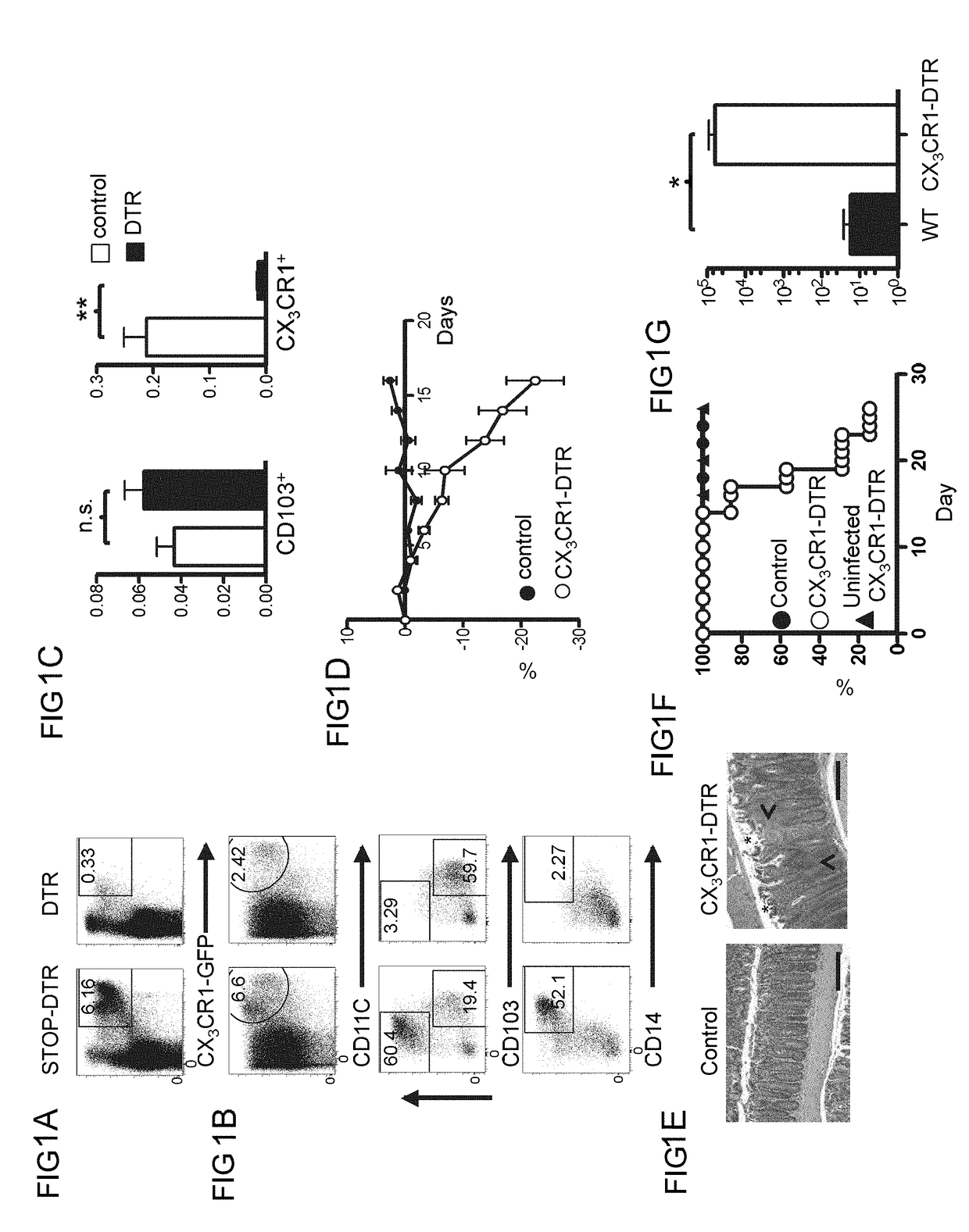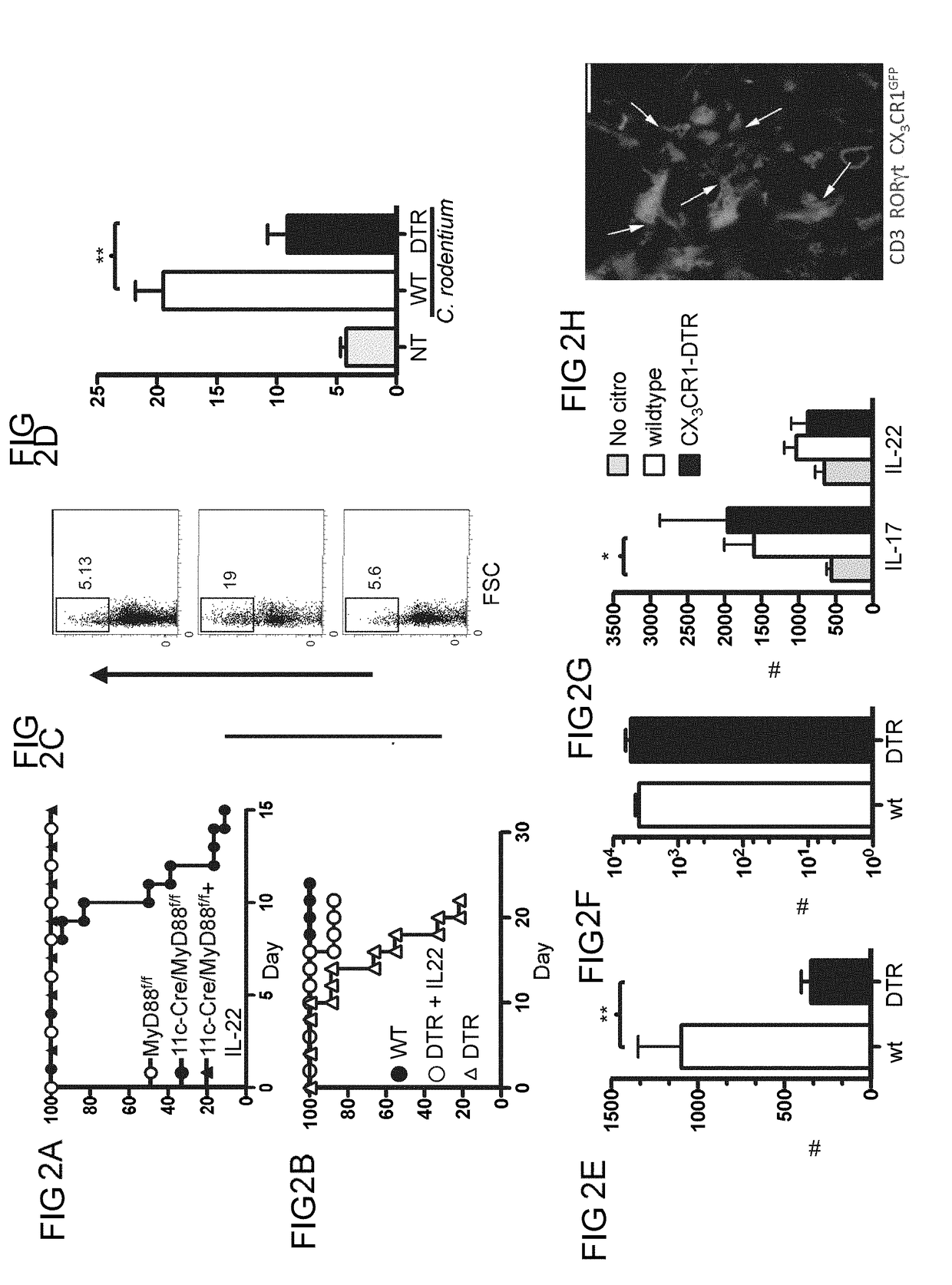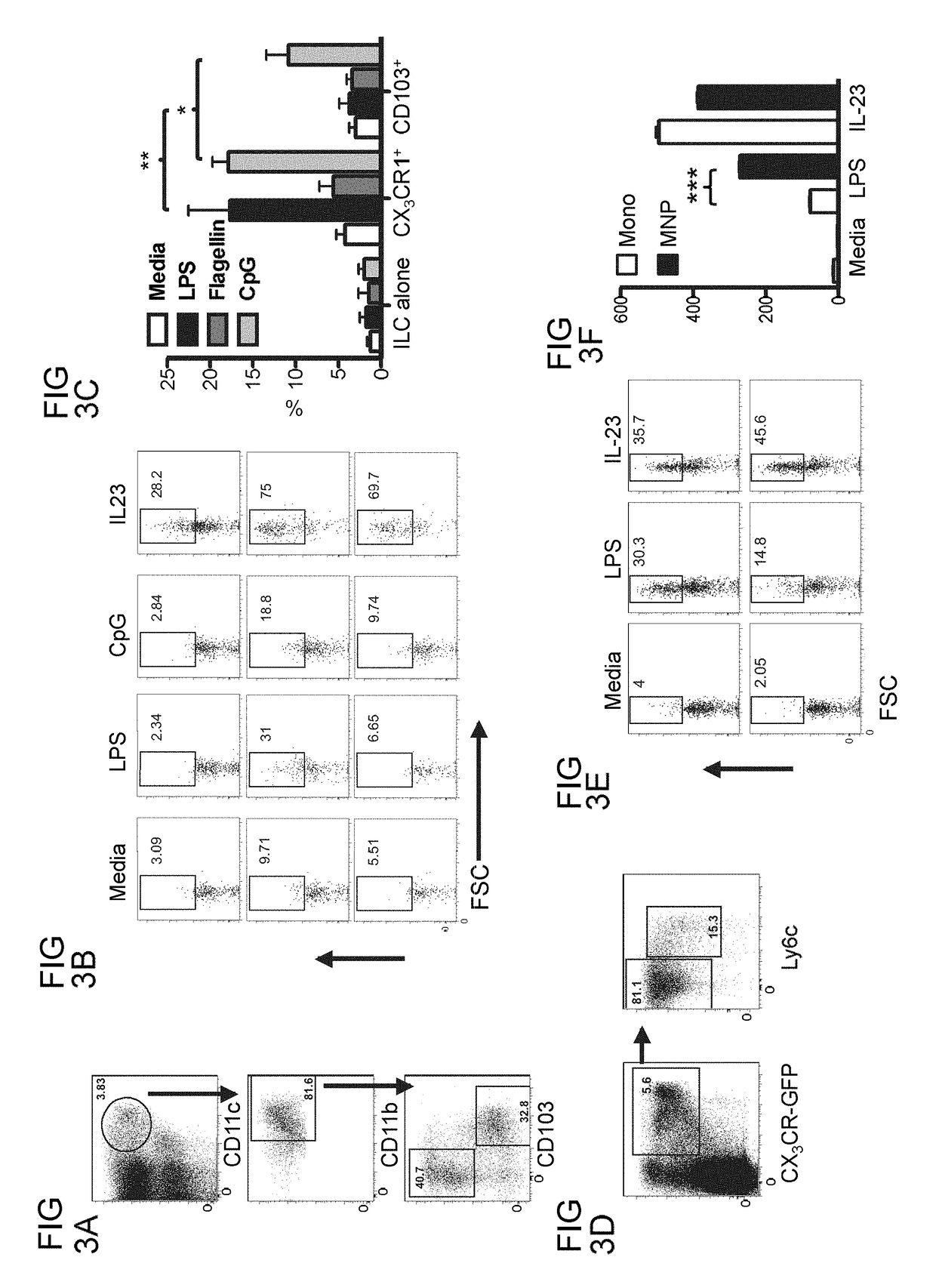Methods of treating inflammatory bowel disease by administering tumor necrosis factor-like ligand 1A or an agonistic death-domain receptor 3 antibody
a technology of death domain receptor and inflammatory bowel disease, which is applied in the field of compositions and methods of can solve the problems of disruption of the continued renewal of the mucosal lining of the gi tract, and achieve the effects of stimulating gi tract mucosal healing, promoting ilc3 production of il-22, and enhancing il-23- and il-1-induced production of il-22
- Summary
- Abstract
- Description
- Claims
- Application Information
AI Technical Summary
Benefits of technology
Problems solved by technology
Method used
Image
Examples
example 1
Materials and Methods
[0119]Antibodies and Flow Cytometry.
[0120]Staining of human cells was performed with c-Kit-e450 (104D2), CD56-PECy5.5 (CMSSB), HLA-DR-PE (LN3), CD11c-FITC (3.9), CD3-e780 (UCHT1), CD19-PerCP5.5 (HIB19), CD103 PECy7 (B-Ly7), CD14 PE (61D3), CD86-PE (IT2.2), CD123 PE (6H6), CD11b PE (CBRM1 / 5) and RORγt (AFKJS-9) from eBiosciences; CD161-FITC, CD83-PE, CD11c PE (555392), CD127 FITC (M21), CCR6-biotin (11A9) are from BD Biosciences; BDCA-1-APC is from Milteny Biotec; CD45-APC (4505) and CD64 (6404) are from Caltag; NKp44-APC (p44-8.1) is from R&D Systems; and BDCA-3 APC (M80) is from Biolegend. Intracellular human cytokine staining was performed with IL-22 PE (IC7821P; R&D), IL-17A-FITC (eBio64CAP17; eBioscience), or IFNγ (45.B3; eBioscience). Staining of mouse cells was performed with CD90.2-e450 (53-2.1), CD3e (145-2C11), NKp46-e710 (29A1.4), RORγt-PE (B2D), CD11c-PECy7 (N418), MHCII A700 (M5 / 114.15.2), CD103 APC (2E7), CD14 PerCP5.5 (Sa2-8), CD11b e780 (M1 / 70), L...
example 2
[0157]To determine if there are human commensal bacteria that can induce cytokine production by ILC3, we transferred into germ-free mice, by oral gavage, fecal microbiota from patients with IBD (FIG. 8). After two weeks, we examined IL-22 expression in ILC3 in the lamina propria of the recipient mice. The results indicate that the complex microbiota from some patients (donor 2 in the figure) support IL-22 production by colonic ILC3. These data reveal the potential for using constituents of the human microbiota to induce ILC3 production of effector cytokines that can protect the epithelial barrier in patients with various inflammatory bowel diseases.
[0158]By way of summary and as demonstrated herein, ILC3 from the lamina propria of patients with IBD produce higher levels of IL-22 compared to ILC3 from patients without colitis. See also Longman et al. (2014, J Exp Med. 211:1571). Using biopsy specimens from patients with a surgical diversion of the intestine, we further showed that IL...
PUM
| Property | Measurement | Unit |
|---|---|---|
| pH | aaaaa | aaaaa |
| pH | aaaaa | aaaaa |
| pH | aaaaa | aaaaa |
Abstract
Description
Claims
Application Information
 Login to View More
Login to View More - R&D
- Intellectual Property
- Life Sciences
- Materials
- Tech Scout
- Unparalleled Data Quality
- Higher Quality Content
- 60% Fewer Hallucinations
Browse by: Latest US Patents, China's latest patents, Technical Efficacy Thesaurus, Application Domain, Technology Topic, Popular Technical Reports.
© 2025 PatSnap. All rights reserved.Legal|Privacy policy|Modern Slavery Act Transparency Statement|Sitemap|About US| Contact US: help@patsnap.com



